What do candidates on the Electrical Safety Management course actually do?
The Electrical Safety Management course is often 'tuned' to suit the audience and our instructors like to get feedback from the candidates as the course progresses but the following gives a general breakdown of the main parts of the course.
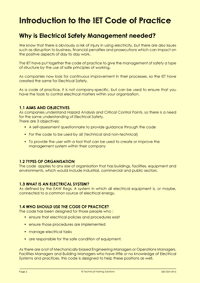
We begin by looking at the need for management of Electrical Safety. Electricity can be lethal, but there are other risks associated with electricity that modern companies need to limit and manage. The IET have created a code of practice to help all sizes of business to create or improve on their electrical safety systems.
On the course we are able to accommodate both technical and non technical candidates, helping them to identify and drive forward new changes or shifts of focus without the need for an in depth knowledge of electrical engineering.
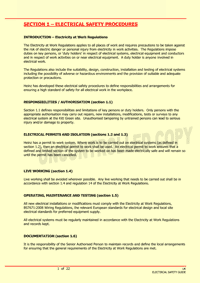
During the course we talk about how the code of practice looks at such things as the company’s policies, or statements of intent, and how they can mould the view of electrical safety, leadership, design, standards and performance.
The course then looks at procedures for getting the job done safely and to the company’s Standard. Risk assessments and method statements all form part of this.
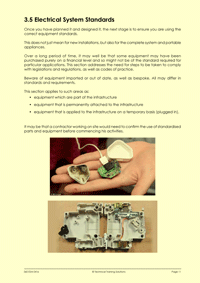 |
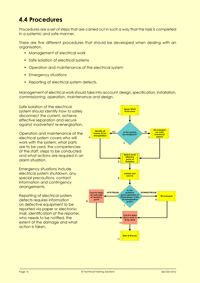 |
Candidates on the Electrical Safety Management training course look at how various common electrical components can fail and the safety impact that these failures might produce. This is one of the pages from the course notes. |
Candidates on the Electrical Safety Management training course study why procedures are so important and look at various examples of, for example locking-off procedures. This is one of the pages from the course notes. |
Lastly, we talk about training, competency and authorisation.
Once we have discussed what the company has in place, we then work through the IET self assessment. Through a group of 3 pointed questions, we will find areas to improve or focus on.
 |
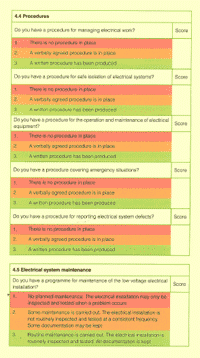 |
This is Section 4 of the Self Assessment Questionnaire used at the end of the Electrical Safety Management course to highlight areas that may need attention. |
This is part of the Self Assessment Questionnaire used at the end of the Electrical Safety Management course to help with site procedures. |
Armed with this, any company will be able to understand where it is falling behind and where to concentrate labour, time and money.
If you would like to learn more about the Electrical Safety Management course then please call us.


